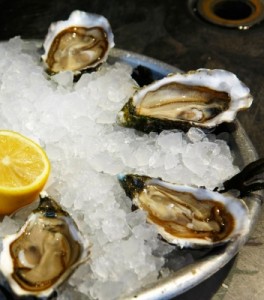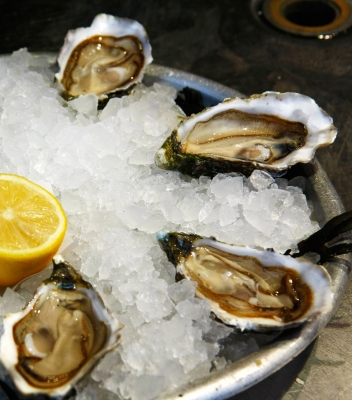Zinc is an essential mineral that is naturally present in some foods, such as oysters, red meat and poultry. It is also found in beans, nuts, brown rice and some types of seafood—such as lobster and crab, whole grains, fortified breakfast cereals and dairy products. The zinc that is found in whole-grain breads, cereals and legumes, however, is less available to the body because the phytates present within them bind zinc and inhibits its absorption.
Why does the body need zinc?

Zinc is involve in numerous aspects of cellular metabolism. In fact, it is required for the catalytic activity of approximately 100 enzymes and plays a role in synthesis, immune function, wound healing, DNA synthesis and cell division. Zinc is also required for proper sense of taste and smell. It supports normal growth and development during pregnancy, childhood and early adolescence. It is especially necessary during adolescence as a critical component of sexual maturation. You need a daily intake of zinc because the body has no way of storing it. A deficiency in Zinc has been tied to things as diverse as “smelly sneaker syndrome” and Geographic Tongue.
How much zinc is the “normal” amount?
The current Recommended Daily Allowances (RDAs) for zinc are listed below. For infants aged 0 to 6 months, the Food and Nutrition Board established an Adequate Intake (AI)* for zinc that is equivalent to the mean intake of zinc in healthy, breastfed infants.
| Age | Male | Female | Pregnancy | Lactation |
|---|---|---|---|---|
| 0–6 months | 2 mg* | 2 mg* | ||
| 7–12 months | 3 mg | 3 mg | ||
| 1–3 years | 3 mg | 3 mg | ||
| 4–8 years | 5 mg | 5 mg | ||
| 9–13 years | 8 mg | 8 mg | ||
| 14–18 years | 11 mg | 9 mg | 12 mg | 13 mg |
| 19+ years | 11 mg | 8 mg | 11 mg | 12 mg |
The UK recommends 15 mg for adults and notes that high doses can lead to stomach cramps, nausea and vomiting. The maximum amount you should take per day is 100mg according to the UK RDA.
What foods contain zinc and how much?
As previously mentioned, oysters, red meat and poultry are the main sources for red meat in an American diet. Oysters, by far, are the best source of zinc. A three-ounce serving contains 74 milligrams (mg) which is 493 percent of the daily value (DV) recommended by the U.S. Food and Drug Administration (FDA). The FDA recommends a DV for zinc of 15 mg for adults and children age 4 and older. DVs were developed by the FDA to help consumers compare nutrients between products as part of the total diet. Food labels, however, are not required to list zinc content unless the food product has been fortified with it. Foods containing 20% or more of the DV are considered high sources of a nutrient. So at 493%, oysters are off the charts good for you!
Other foods with more than 20% DV are beef roast (47%), Alaska King crab (43%), broiled beef patty (35%), fortified breakfast cereal (25%), and lobster (23%). Foods that have more than 10% but less than 20%, so still good sources of zinc in a varied diet, are: pork chops (19%), baked beans (19%), dark meat of chicken (16%) [It is interesting to note that a chicken breast has only 6%.], 8 ounces of fruit yogurt (11%) and cashews (11%).
What about zinc supplements?
Zinc supplements come in several forms: tablets, capsules and lozenges. They contain one or more of several forms of zinc, including zinc sulfate, zinc acetate and zinc gluconate. Each form has differing amounts of elemental zinc. For example, approximately 23% of zinc sulfate is elemental zinc, which means 220mg of zinc sulfate contains only 50 mg of elemental zinc. According to the National Institute of Health, research has not determined whether differences exist among the different forms of zinc in absorption, bioavailability or tolerability.
Since zinc is something our bodies need every day and does not store zinc long-term, we need to make sure we are getting enough zinc through our diets and supplement as needed. According to the 1988-1991 National Health and Nutrition Examination Survey, 35-45% of adults over 60 do no intake enough zinc through diets and supplements.
If you suffer from geographic tongue, try zinc supplements. A zinc deficiency may be responsible for some cases of geographic tongue. A study done by the Department of Oral Medicine in Hamadan, Iran, concluded that zinc sulfate helped the majority of the test subjects with signs of healing within ten days. “The prescribed dose for geographic tongue is about 200-220 mg once a daily …taken orally.” Other studies including one in Scotland have tied Zinc deficiencies to Geographic Tongue.
How do I know if I am deficient in zinc?
There are many symptoms that could characterize a zinc deficiency. The most common are growth retardation, loss of appetite and impaired immune function, Severe zinc deficiency can cause hair loss, diarrhea, delayed sexual maturation, impotence, hypogonadism in males and eye and skin lesions. Other symptoms include weight loss, delayed wound healing, impaired taste and mental lethargy. Because any one of these symptoms could be caused by something other than a zinc deficiency, a medical examination is necessary to determine the cause and treatment. A major issue in detecting zinc deficiency, however, is the widespread distribution of the mineral throughout the body.
Gastrointestinal diseases such as Crohn’s or other digestive disorders can decrease zinc absorption. Chronic diarrhea also leads to excessive loss of zinc. So if you have Crohn’s, short bowel syndrome, ulcerative colitis, malabsorption syndrome, chronic liver disease, chronic renal disease, sickle cell disease, diabetes, malignancy or other chronic illnesses, you may not be absorbing adequate amounts of zinc. Also, if you are a vegetarian, you may be deficient in zinc as well as vitamin B12.
“Oysters On Ice” by Tina Phillips / FreeDigialPhotos.net
